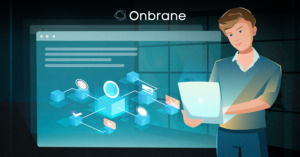Q1. To begin, tell us a bit about yourselves!
Laure: Hi, my name is Laure. I have been the Quality Assurance Manager at Onbrane for almost 4 years now. I arrived at the beginning of the adventure, and I am proud to be part of it ever since!
I started my career at Capgemini France as a developer, then I spent a few years in the UK and US. When I came back to France, I decided to join a very dynamic company with a mission to build a better, more sustainable debt market, and here we are!
Teona: Hi, I am Teona. I’ve been working as a test automation engineer at Onbrane since January.
Last year, I graduated from university with a bachelor’s degree in Information Technology.
During my student years, I did an internship as a software tester, then I worked as an IT HelpDesk specialist in the bank for over a year. Just before joining Onbrane, I was a software tester in Georgia Tech Tbilisi where I started learning automation testing. And the rest is history!
It is very nice to be a part of a fast-evolving company like Onbrane that is full of opportunities for young women in tech like me!
Q2. How is the quality department structured at Onbrane?
Laure:The Quality department at Onbrane is composed of 5 people, and can be divided into 2 parts:
Manual testing and Automated testing.
As Onbrane grows, the quality assurance department takes more and more space in terms of staff. It was just me at the beginning, and now the team represents 20% of the total number of employees.
Testing is crucial if we want to maintain an excellent quality level, and that’s what we do!
Q3. What does your testing process look like?
Laure: I would say that we have 3 levels of Manual testing:
First, we have New feature testing that consists of meticulously testing each new feature. The tests are based on the user stories that we prepare beforehand. All the cases are recorded, and each case is the subject of a particular test.
Then we have Daily testing. It consists of testing the whole platform by scrolling through all available transactions. The main purpose of these daily tests is to make sure that we don’t have any regression, day by day.
In addition to the daily tests, we conduct weekly testing which is basically mimicking the whole process of onboarding a new actor on the platform (creation of a new company in our back office, declaration of new users, …).
This approach also ensures the non-regression of the platform.
Of course, all these tests are recorded in excruciating detail in a document, which is enriched as the platform evolves.
We call it our bible!
So far, this document consists of over 500 pages, including around 250 different test cases. That’s why we need to automate the testing process.
Today 90% of the tests are done manually, and so only 10% are automated. Our goal is to reverse the trend and reach 60% of automated tests by the end of the year.
Speaking of automation, Teona will explain our automated testing process in more detail!
Teona:The first step of automation testing is choosing which parts to automate. We decide this based on the manual testing process. For example, repetitive tasks such as daily testing are prioritized to be automated first.
Once we decide what to automate, we write test automation scenarios to describe the flow. Each test scenario describes a different flow of actions on the platform.
Also, we have predetermined static data which we use throughout automation, such as the platform’s test users.
We create the architecture of the environment where the automation process should take place. To write and run test cases we use the Cypress automation framework, which we adjusted to our specific processes.
Cypress replicates human interaction with the platform, which is basically a simulation of manual testing. Each simulated test corresponds to test scenarios we wrote before.
The whole process is recorded and saved for each test and uploaded on the Cypress dashboard. This way we can observe the whole process and in the case of an error, see when and where it occurred.
One of the main goals is to make test scenarios be scalable, as well as adaptable to the platform development so we keep up with the growth and avoid regressions at any point.
Q4. What are the main challenges in terms of testing and quality assurance specific to the Onbrane platform?
Laure: The Onbrane platform grows every month and each new release offers a lot of new features. We have to make sure that they are totally responding to the customers’ needs but also that they won’t have a bad impact on the existing functionalities.
That’s why our challenge is huge.
Other than testing that the platform functions flawlessly, we also need to make sure that we offer an excellent User Experience. The navigation on the platform must be simple, intuitive, and straightforward.
No mistake can be tolerated on a platform, even more, when it comes to the finance industry.
Onbrane users are large companies that trust us with the negotiation and issuance of debt securities, at the volume of hundreds of millions of Euros.
That’s why we have to maintain an excellent level of quality. Trust is the key to our success, and to get it, Onbrane must be beyond reproach!
Teona: As Laure already mentioned, the Onbrane platform is continuously evolving, launching new features as well as updating existing ones every 3-4 weeks.
From the automation testing point of view, this means that test scenarios must develop with the platform. This is absolutely essential to prevent regression and catch errors as soon as possible.
Sometimes, this process can be pretty challenging, but in order to maintain excellent platform quality, it must be done.
Q5. Lastly, I want to ask you about your experience as a woman in the tech industry. Did you experience any biases or hardships throughout your career?
Laure: I have always worked in companies ruled by men and have always been working mainly with men. I can’t really say that I directly suffered from gender discrimination but, (yes, there is a “but”), even though it was not direct, it still very much existed. You only had to look at the difference in the wages between men and women to see that.
Unfortunately, this gap persists, even if it tends to decrease. The road is still long, the gender bias is still present but I believe we are going in the right direction.
I have been fortunate to work in a very fair company where men and women are given the same opportunities. Thanks to Onbrane for being such an example in this matter!
Teona: Fortunately, I have not experienced gender discrimination in the tech industry myself.
However, I have seen, heard, and read many stories where a person’s capabilities are assumed by only gender.
Many opportunities are taken away from women because of stereotypes and general assumptions. I am very glad that Onbrane is an inclusive company and everybody has an equal amount of opportunity despite their gender.






